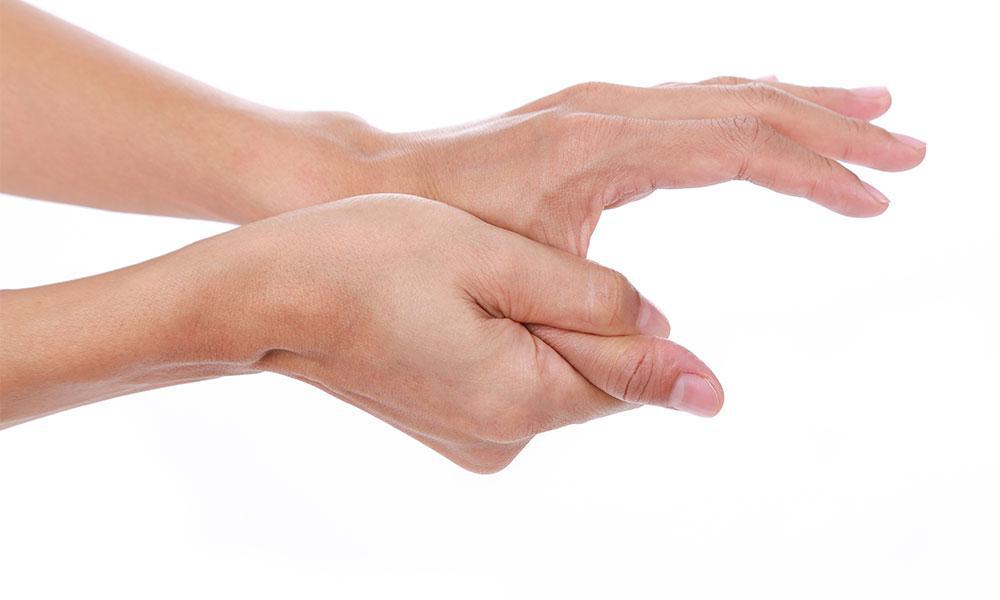Bending the fingers of one hand seems like the easiest thing to do. With this simple movement, we can do an infinite number of things: grab objects, write, eat, comb our hair, drive, tie our shoes. In this article, we will give you a complete guide about what Trigger Finger is. But in certain situations, this simple gesture can become not only difficult but also painful to do. And the consequence is that many of the daily activities we do become difficult to perform. The stenosing tenosynovitis of the flexor of the fingers. Known to most as a trigger finger, it is an inflammatory pathology. This sheath allows the tendons to bend and extend to perform bending and stretching of the fingers.
What is Trigger Finger
When the sheath becomes inflamed, as a consequence, its membrane thickens, and the canal narrows, preventing the free sliding of the tendon. The differences between an inflamed finger and a healthy one are often not visible, but you notice that something is wrong when you try to extend your finger from a closed position. The finger remains bent, extending snap only at a later time. This movement is often accompanied by pain.
It is a disease that mainly affects adults between 40 and 60 years old, with a higher incidence in women than in men, but what is trigger finger can also affect children between the ages of 6 months and two years. People forced to perform repetitive gripping actions for occupational reasons or as a hobby are more susceptible to trigger fingers’ onset. It is not always true that trigger finger heals on its own: if inflammation becomes important, it is good to take action to extinguish inflammation and swelling, which risk, in the long run, creating a vicious circle that aggravates the condition of those who suffer from it. Let’s see what to do to alleviate and treat this pathology if you suffer from a trigger finger.
What is Trigger Finger: Symptoms
The main symptoms of trigger finger are:
- swelling of the finger;
- joint stiffness and difficulty in movement;
- the snapping movement involving the finger with the inflamed synovial sheath;
- soreness at the base of the finger, which to the touch may reveal the presence of a small subcutaneous lump;
- pain that can extend from the hand to the wrist.
In severe cases, the finger can remain in a bent position, unable to complete the extension.
What is Trigger Finger: Causes
Among the most accredited hypotheses of the causes of trigger finger are:
- traumas affecting the hand: an accident while doing sports, a fall from a bicycle, the use of machinery that vibrates and creates continuous stress on the tendons can facilitate the formation of microtraumas that favor the onset of the inflammatory state;
- Carrying out repetitive activities: continuous efforts or repeated movements create stress in the hand tendons, becoming inflamed. This explains why the most affected people are musicians or those who use screwdrivers or scissors for most of their working time. In recent years, moreover, people who have the habit of typing messages on their mobile phones using only their thumbs have also been affected;
- Gender and age: this disease mainly affects after 40 years and affects women more. One of the causes of this tendency may be the reduced production of collagen, a substance that makes up the main soft tissues, including tendons. With less collagen, the tissues tend to weaken and lose their elasticity and tone;
- Other pathologies: those are suffering from gout, diabetes, hypothyroidism, rheumatoid arthritis, and rhizoarthrosis can be more prone to suffer from trigger fingers.
What is Trigger Finger: Natural remedies
If the symptoms are still mild and the movements do not compromise the hand’s use, natural remedies for trigger fingers can be used. Among these, the main ones are:
- Ice packs: Cold helps reduce the sensation of pain. However, it is advisable never to put ice in contact with the skin (it could even cause serious burns). But always put a folded cotton cloth between the skin and the ice;
- Arnica cream: arnica is certainly one of the best known medicinal plants that boast anti-inflammatory and pain-relieving properties. Spreading a veil of arnica ointment or cream is useful to help relieve inflammation and, at the same time, soothe the pain. The advantage of using cream is that it can be applied several times during the day.
Post-operative complications
Rare complications that can arise following trigger finger treatment include:
- tendon rupture;
- infections, often treatable with antibiotics ;
- stiffness of the finger, often caused by excessive caution in making movements in the post-operative phase;
- Relapses, in exceptional cases, even after years.
Remedies and advice
- Resting your finger for 4-6 weeks helps you avoid overstressing and relax the affected area.
- Minimize repetitive gripping movements and demanding manual work.
- Avoid overexertion and trauma.
- Use anti-vibration gloves in case of repetitive manual work activities.
- Perform relaxing exercises for the hands and rotation exercises for the wrist.
- Massaging the affected finger can provide well-being and help relieve pain.
The most suitable therapy
On the other hand, the conditions of the inflammation become more serious, so much so that they risk compromising the performance of normal manual activities. The purpose of the brace is to keep the finger in extension. Among the therapies that respond positively to how to treat trigger fingers, there are also infiltrations. Which can be, in severe cases, based on corticosteroids.
Even the gym for the trigger finger can be useful for relieving pain; in particular, trigger finger exercises tend to improve joint mobility. In addition to this, it is also good to avoid repeated manual movements. Those activities require gripping and closing movements of the fingers in fists and avoiding prolonged use of vibrating machinery. For the most serious cases, however, it may be necessary to resort to anti-inflammatory and analgesic drugs to relieve the synovial sheath and to reduce the pain caused by the disease.
Possible interventions
Trigger finger surgery can be of two types:
- Percutaneous release or percutaneous release of the trigger finger: This is a surgical procedure performed under local anesthesia. In which a needle is used to return the locked finger to its normal position. This type of operation for the trigger finger is particularly indicated for the index, middle, and ring fingers;
- Surgery: through this surgical procedure, a ten lysis of the flexors is performed. Which allows freeing the tendons from the adhesions of the sheath that limit the movements. So this restores the functionality of the tendons and improves finger movements.
Although the patient can start moving his fingers again after a few days. After the trigger finger, the recovery can last even a few months. It is important to stay at rest and not strain the affected hand to regain correct functionality. Which allows you to perform targeted exercises for the fingers.
Trigger finger surgery has rare complications, including tendon rupture, infection, post-operative finger stiffness, and relapses years later. To decide whether the patient should be operated on or not and to understand the severity of the trigger finger, an ultrasound. And an X-ray examination can help the treating physician. To define the severity of the disease and the type of treatment most suitable for the patient.
How to counteract the Trigger finger?
If you’ve already experienced some of the symptoms, I told you about, avoid any physical activity that can strain the tendons and aggravate the inflammation. Here is what I recommend to relieve the pain caused by the “trigger finger” and counteract the inflammation:
- Reduce or stop any activity that causes you pain.
- If you frequently make repetitive movements with your fingers, take frequent breaks.
- Apply ice to the fingers affected by the inflammation.
- Use a brace to keep sore fingers at rest.
- Contact your doctor immediately.
Among the medical therapies recommended to counteract inflammation, there are magnetotherapy, cryotherapy, and laser. In the most severe tenosynovitis cases, it may be necessary to resort to cortisone infiltrations or surgery. The most common surgery takes place in day hospital and consists of incising a small area at the inflamed finger base. To free the tendon and allow its sliding inside the sheath again.
NSAIDs
The non-steroidal anti-inflammatory drugs may be employed to treat trigger fingers thanks to their anti-inflammatory and analgesic properties. To reduce the inflammation of the synovial sheath and to alleviate the pain caused by the disease.
The active ingredients most used in the treatment of trigger fingers will be reported below. However, the doctor’s exact dosage must be established according to the severity of the inflammation and the patient’s condition. Therefore, it is essential always to follow the instructions provided by it.
- Ketoprofen( Artrosilene ®, Orudis ®, Oki ®, Fastum gel ®, Flexen “Retard” ®, Ketodol ®): ketoprofen is available in different pharmaceutical formulations suitable for different routes of administration (oral, cutaneous, rectal, and parenteral ). When taken orally in the treatment of trigger fingers. The dose of active ingredient usually used is 150-200 mg per day. It is very important not to exceed the maximum dose of 200 mg per day.
- When using pharmaceutical formulations for cutaneous use based on ketoprofen. It is important to remember that – to avoid the onset of photosensitivity reactions. Both during the treatment and for at least two weeks from the end. Of the same.
- Ibuprofen ( Brufen ®, Moment ®, Nurofen ®, Arfen ®, Actigrip fever and pain ®, Vicks fever and pain ®): ibuprofen is also available in different pharmaceutical formulations suitable for different routes of administration. When administered orally to treat trigger fingers. The dose of ibuprofen used may vary from patient to patient and should be determined by the physician.
- Naproxen ( Momendol ®, Synflex ®, Xenar ®): when naproxen is administered orally. When using the naproxen-based gel or cream, on the other hand.
Corticosteroids
Corticosteroid-based therapy for trigger finger care involves local treatment by infiltrating the same in correspondence with the tendon membrane. This therapeutic approach tends to be more effective if carried out shortly after the onset of the disease’s first symptoms.
- In some cases, the corticosteroids used to treat trigger fingers are available in pharmaceutical formulations combined with local anesthetics (such as, for example, lidocaine ).
- Infiltration of corticosteroids is a delicate operation and must be performed by qualified personnel. As there is the risk of causing damage and tendon rupture.
- Among the corticosteroids used in the treatment of trigger finger, we remember:
So the drug does usually used varies from 4 mg to 80 mg, depending on the severity of the disease. Depending on the severity of the disease.
Triamcinolone ( Kenacort ®): The usual starting dose of triamcinolone is 2.5-5 mg. If he deems it necessary, the doctor may decide to vary the amount of drug administered to reach the optimal dosage for controlling the disease.
Final remarks
From a clinical point of view, the trigger finger can present itself differently depending on the disorder’s evolutionary stage, and many therapeutic options allow the functional recovery of the hand. The patient must be able to grasp the clinical signs of the trigger finger. But above all must try to prevent the progression of the disease.

